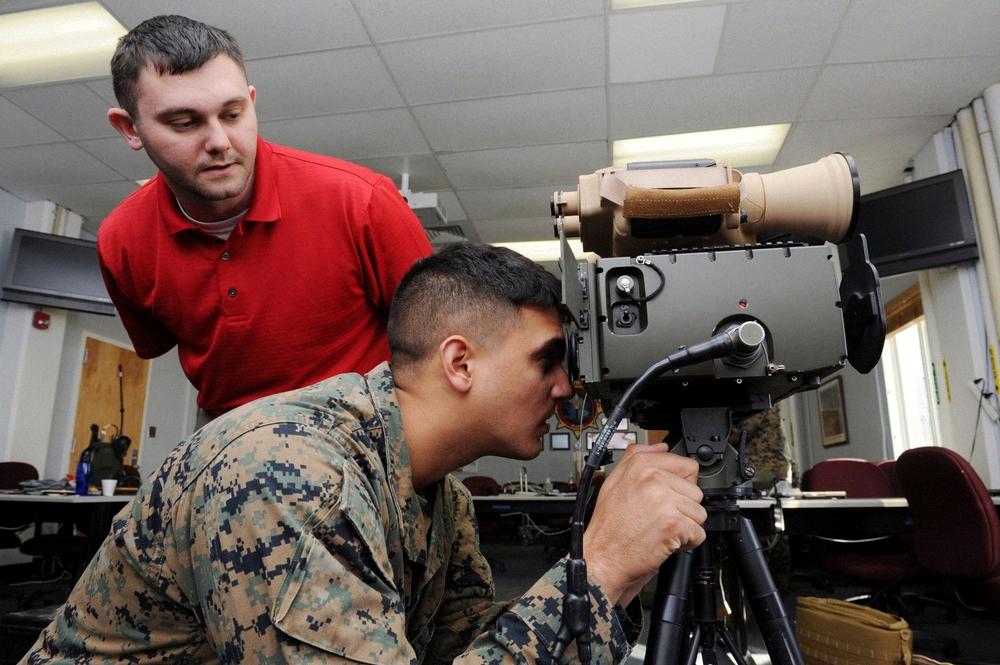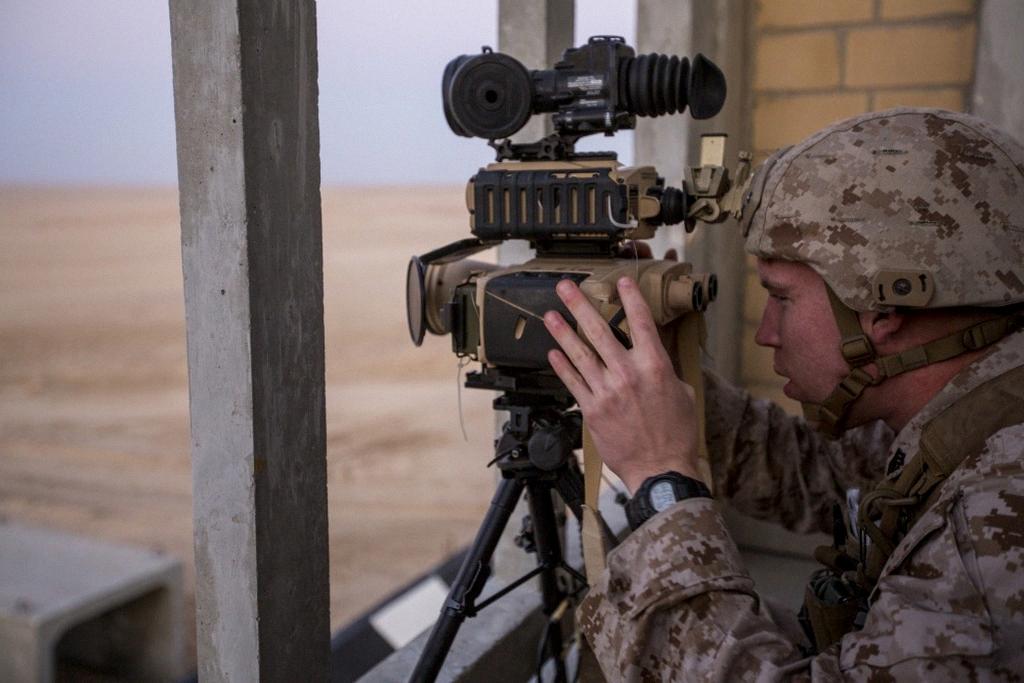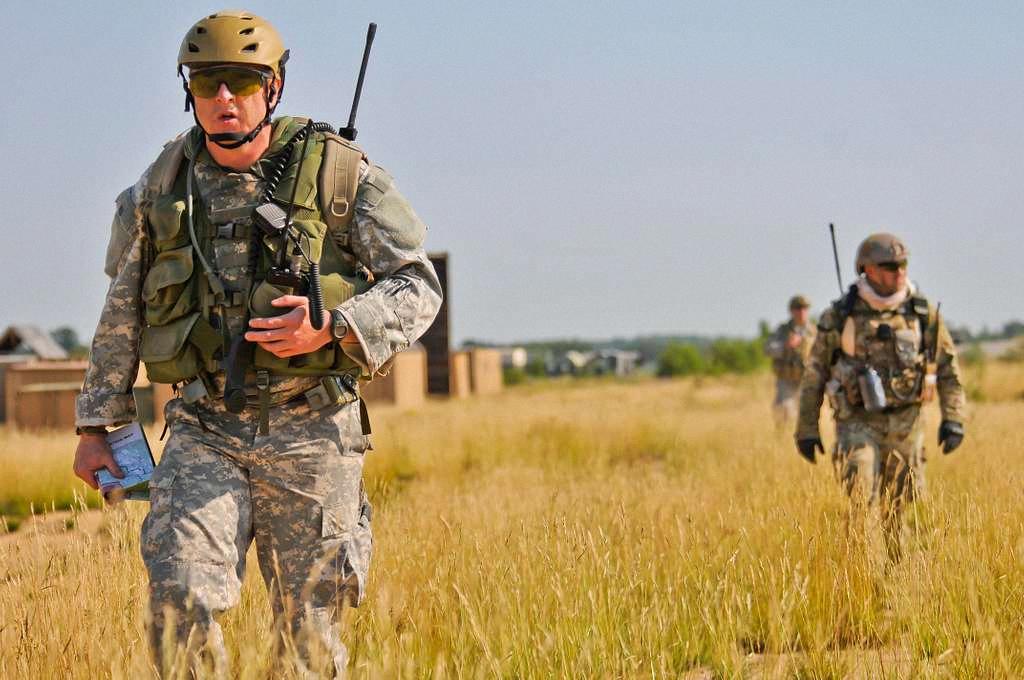The Joint Fire Support Specialist, commonly known as a “FiSter” is a crucial member of the U.S. Army and Marine Corps. These soldiers are responsible for leading, supervising, and participating in intelligence activities such as target processing for artillery units and maneuver brigades. In simpler terms, they are the ones who make sure the artillery hits the right target.
The FiSter’s main responsibility is to lead and train the forward observer team and combat observation lasing technician in combat operations. This includes carrying out missions that involve scouting for targets, relaying information to the artillery units, and ensuring that the artillery fire is accurate and effective. Although technology has advanced, these soldiers still carry a paper map, a compass, and a radio. This is because in combat situations, technology can fail, and these soldiers need to be prepared to operate without it.
One of the unique aspects of the FiSter’s job is that they are assigned to the Artillery but are not with the Artillery. Instead, they are with the Infantry, which makes them essentially on their own. This means that they must be self-sufficient and able to adapt to changing situations quickly. They are the eyes and ears for naval artillery and artillery gun lines across the world. With their specialized training, they can operate in any environment, whethr it be in a city or a jungle.
Being a FiSter is not for the faint of heart. It requires a high level of mental and physical toughness. They must be able to work under pressure, think on their feet, and be willing to put themselves in harm’s way to complete the mission. They are often the first ones on the ground and the last ones to leave.
The FiSter MOS is a critical component of the U.S. Army and Marine Corps. Without them, the accuracy and effectiveness of artillery fire would be greatly diminished. These soldiers are the backbone of the Artillery and Infantry, and their dedication and hard work ensure that our military is the best in the world.
The Role of a Fister in the Army
A Fister in the U.S. Army is an abbreviation for a Joint Fire Support Specialist. These soldiers are responsible for coordinating and directing artillery, mortar, and naval gunfire support. They work closely with infantry and armored units to provie accurate and timely fire support during combat operations. FiSTers undergo extensive training to develop their expertise in identifying targets, calculating fire support solutions, and communicating with higher headquarters to request support. They also have knowledge of a variety of weapons systems and are able to provide guidance and support to units in their assigned area of operations. a Fister is a highly skilled and essential member of the Army’s fire support team, responsible for ensuring that the right firepower is delivered to the right target at the right time.

Source: dvidshub.net
The Role of a 13F in the Army
A 13F in the Army is a fire support specialist who is responsible for leading, supervising, and participating in intelligence activities such as target processing for artillery units and maneuver brigades. The primary duties of a 13F include training and leading a forward observer team and combat observation lasing technician durng combat operations. This includes identifying targets, directing the delivery of artillery and mortar fire, and adjusting fire to ensure accuracy. Additionally, a 13F may also be responsible for collecting and analyzing intelligence data, preparing maps and charts, and communicating with higher headquarters to provide real-time situational awareness. a 13F plays a critical role in supporting ground forces by providing accurate and timely information to help commanders make informed decisions and achieve mission success.
Is the 13F Military Occupational Specialty Considered Infantry?
13F is considered as part of the Infantry. 13F is the military occupational specialty code for Fire Support Specialist. These soldiers are responsible for coordinating and directing artillery and mortar fire support for infantry and other ground units. They work alongside the Infantry to provide support and ensure that the artillery fire is accurately delivered. Although they are not classified as Infantry, they are considered an essential part of the Infantry team, working closely with them to achieve mission success.
What is the Origin of the Term FiSTers?
FiSTers are called so because they are a part of the Forward Support Team (FiST), which is a group of Army soldiers who are responsible for providing guidance and support to artillery gun lines. These soldiers are specially trained to observe and report enemy movements and provide accurate coordinates for artillery fire. They work closely with naval artillery units to ensure that their targets are accurately hit. The term “FiSTer” is commonly used to refer to these soldiers because they are the primary operators of the FiST and are essential to the success of artillery operations across the world.
Length of Army 13F Training
Army 13F training, which prepares individuals for the role of fire support specialist, consists of a total of 16 weeks of training. This includes 10 weeks of Basic Combat Training, which covers the fundamentals of military life and combat, and six weeks of Advanced Individual Training with on-the-job instruction. During this training, individuals will spend time in the classroom learning the neessary skills and knowledge, as well as in the field under simulated combat conditions to gain hands-on experience. The comprehensive training ensures that individuals are fully prepared for the challenges and responsibilities of their role as a fire support specialist in the Army.

Source: reddit.com
Stationing of 13F Military Personnel
As a 13F, or Fire Support Specialist, there are several duty stations that you may be assigned to throughot your career in the military. Some of the most common duty stations for 13Fs include Fort Benning in Georgia, Fort Bliss in Texas, Fort Bragg in North Carolina, Fort Campbell in Kentucky, Fort Carson in Colorado, Fort Drum in New York, Fort Hood in Texas, and Hunter Army Airfield in Georgia. However, it’s important to note that 13Fs can be stationed at a variety of other locations both domestically and internationally, depending on the needs of the military. Ultimately, your duty station as a 13F will depend on a variety of factors, including your specific skills and training, the current needs of the military, and your personal preferences.
Minimum ASVAB Score Required for 13F Position
To become a 13F Fire Support Specialist in the Army, a minimum ASVAB line score of 96 in the Field Artillery (FA) category is required. This score is based on the Armed Services Vocational Aptitude Battery (ASVAB) test, whch is designed to assess a person’s abilities and aptitudes for various military occupations. The FA category measures a person’s knowledge of the principles and procedures involved in the operation and maintenance of various field artillery weapons and equipment. So, if you are interested in pursuing a career as a 13F Fire Support Specialist, it is important to focus on developing your skills and knowledge in this area to achieve the required ASVAB score.
Do I Need Security Clearance for 13F?
13F Fire Support Specialist requires a security clearance to work in this job. Specifically, a Confidential security clearance is needed to begin work as a 13F. However, if you wish to become a supervisor or hold a higher-ranking position within the field, a Secret clearance is required. This is because the 13F Fire Support Specialist works with sensitive information related to military operations, and it is crucial to ensure that this information is kept confidential and secure. Therefore, obtaining the necessary security clearance is a crucial step in pursuing a career as a 13F Fire Support Specialist.
Highest Rank in Infantry
The highest infantry rank is the Command Sergeant Major (CSM), which is a non-commissioned officer rank in the United States Army. This rank is the highest enlisted rank and is above the ranks of Sergeant Major, First Sergeant, and Master Sergeant. Command Sergeant Majors are appointed by the Army Chief of Staff and are responsible for advising the commander on all matters related to enlisted soldiers, including training, welfare, and discipline. They are also responsible for ensuring that soldiers are properly trained and equipped to carry out their duties. The CSM is the voice of the enlisted soldiers and is responsible for advocating for their neds to the commander. the Command Sergeant Major is the highest infantry rank and plays a crucial role in the leadership and management of the enlisted soldiers in the United States Army.

Source: marinecorpstimes.com
The Meaning of ’13F’
Form 13F is a term used in the context of financial regulation and reporting requirements. Specifically, it refers to a quarterly report that institutional investment managers are required to file with the Securities and Exchange Commission (SEC). The term “13F” is simply a reference to the form number assigned to this report by the SEC. This report must contain information about all equity assets that the investment manager has uder management with a value of at least $100 million. The purpose of this reporting requirement is to provide greater transparency to investors and the public about the investment activities of large institutional investors.
Are 13F Filings Publicly Available?
13F filings are public. These filings are submitted to the Securities and Exchange Commission (SEC) by institutional investment managers who manage over $100 million in assets, and they are required to disclose their holdings of Section 13(f) securities. The information contained in these filings is then made available to the public through the SEC’s EDGAR database. Additionally, the SEC publishes a quarterly list of Section 13(f) securities that is also available to the public on their website. This information can be useful for investors who want to track the holdings of institutional investment managers and make more informed investment decisions.
What Is the Meaning of 13 Bravo in the Army?
13 Bravo is the Military Occupational Specialty (MOS) code given to Army Cannon Crewmembers. These soldiers are trained to operate and maintain the howitzers used by infantry and tank units in combat. Their primary duty is to load and fire the howitzers, which involves setting fuses and charges on multiple munitions. Additionally, they are responsible for making quick decisions, often while under fire themselves. The role of 13 Bravo is crucial in providing fire support to troops on the ground and ensuring the success of military operations.
What Is the Meaning of 13 Bravo in the Military?
In the military, 13 Bravo refers to the MOS (Military Occupational Specialty) code for the Artillery Career Field. Specifically, it refers to the MOS for Cannon Crewmembers, who are responsible for firing howitzer cannons in support of infantry and tank units during combat. Cannon Crewmembers are trained to operate and maintain various types of artillery weapons, to perform ammunition handling and safety procedures, and to perform various other tasks related to artillery support during combat operations. the 13 Bravo MOS is a critical role in the military, providing critical support to ground troops in a variety of combat situations.

Source: picryl.com
The Meaning of a Toast in the Military
In military, a toast is a formal expression of respect, gratitude, or admiration offered during a social event, such as a formal dinner or ceremony. It is a way of recognizing and honoring individuals, organizations, or even nations, for their contributions and achievements. Military toasts are often made to honor fallen comrades, celebrate victories, or pay tribute to the host country or allied nations. Military toasts are usualy accompanied by the raising of glasses, and often follow a specific format, with a designated person proposing the toast, and the audience responding with a specific phrase or response. military toasts serve as a way to strengthen bonds between members of the military community and to maintain traditions of honor and respect.
Conclusion
The role of a FiSTer in the U.S. Army is crucial for ensuring that artillery units and maneuver brigades have accurate and timely intelligence to support ther operations. These highly trained specialists lead and train forward observer teams and combat observation lasing technicians, and are responsible for carrying essential tools such as paper maps, compasses, and radios for communication. Despite the advancements in modern technology, the role of a FiSTer remains as important as ever, and their presence is vital for the success of military operations across the world. the FiSTer army is a critical component of the U.S. military, and their contributions are greatly valued and appreciated.
